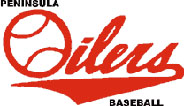By Jenny Neyman

Photos by Jenny Neyman, Redoubt Reporter. Belle Saldivar gives Sophie Saldivar a swing around the bandstand, while Dave Saldivar and Miriam Olivo sway to the music of Troubadour North at the Relay for Life fundraiser on Saturday at the Soldotna Sports Center.
Redoubt Reporter
Though 10-year-old Joey Workowski, of Nikiski, was wearing a purple “survivor” shirt at the Central Kenai Peninsula Relay for Life event last weekend at the Soldotna Sports Center, cancer wasn’t the first thing on his mind.
Even the worst of his worst experiences undergoing two and a half years of treatment for leukemia were superceded by matters far more attractive to the attention of a fifth-grader: There were games to play, after all, and horses to ride and bands to listen to and food to eat and the nervous excitement of being a guest speaker.
Even in that role, as a short-brown-haired, bespeckled kid in a too-big purple shirt stepping up to the mic and delivering a speech to the crowd, he wasn’t, in his head, Joey with cancer. Asking him why he was a guest speaker required a prompt from his mom, Laura Niemczyk.
“Because I was speaking to the high school at the minirelay at Nikiski High School (an event held May 23 as a fundraiser for the larger Central Peninsula Relay for Life),” Joey said. “And Jonah asked me if I wanted to be the guest speaker for the… .”
“Yes, but what kind of guest speaker are you? What are you wearing that shirt for?” Niemczyk interjected.
“Oh, because I’m a survivor guest speaker,” he said.

A participant winds up to throw a sponge at Joey Workowski, volunteering as a target in a fundraiser booth at the Relay for Life on Saturday at the Soldotna Sports Center.
In a larger sense, yes, his speech was about cancer. He gave an outline of his experience with leukemia. How, at age 4 ½, he became sick — excessively tired and not wanting to eat or walk anywhere.
“I thought he was anemic, dehydrated,” Niemczyk said. “We walked into an emergency room and took a quick little blood test and the bottom fell out of everything we planned.”
Living in Washington at the time, he was rushed to Seattle Children’s Hospital, where he began 39 months of chemotherapy treatment, with all the ups and downs, and literal pins, needles and bumps along the way.
“Some of the medicine I had to take made me hurt and stuff. My steroids, I had an allergic reaction to it and it made me really itchy,” Joey said.
“The number-one leukemia-fighting kids drug, he was mildly allergic to it. Oh yeah, that was fun,” Niemczyk said.
But though the topic was cancer, the point was something much more than that — living through it, getting past it and thanking those who helped with all aspects along the way.
“We wanted an adventure, and we weren’t about to let his cancer slow us down,” Niemczyk said of why, during Joey’s treatment, they moved from Washington to Nikiski.
They like it here, Joey said, especially the wildlife — though not the big moose when they act scary at his bus stop, he

Joey Workowski laughs in anticipation of the next toss. Workowski, a cancer survivor, was a guest speaker at this year’s Relay event.
said. And the chattery, toothy-grinned ball of energy likes life, especially since he finished chemo treatment.
“I’ve been out for two years and five months — not that I’m counting,” Joey said. “I like that I don’t have to worry about the cancer and stuff, and I can do sports. I like soccer and basketball.”
He doesn’t even mind being a public speaker.
“It’s scary at first but, normally, once I start talking I can’t really stop,” he said, as his mom gave a wide, almost eye-rolling head nod to affirm that statement.
“It’s about all the stuff I can remember about chemo, and about why I relay,” Joey said of his speech.
To Joey, he’s a kid who happened to have leukemia, and also happens to like soccer and basketball, and happens to attend Nikiski North Star Elementary School, and happens to get nervous when moose come around while he’s waiting at his bus stop. Cancer is a detail of his life, not the defining characteristic of it, and not — as his mom cries with relief while listening to him speak — the end of it.
“It’s very emotional for me,” said Niemczyk. “But I’m really proud of him, and he’s turning into a good public speaker. And we had a good outcome so we’re more than happy to share his story and help inspire others to keep fighting the fight and raise money. It makes me cry every time.”
Continue reading →










